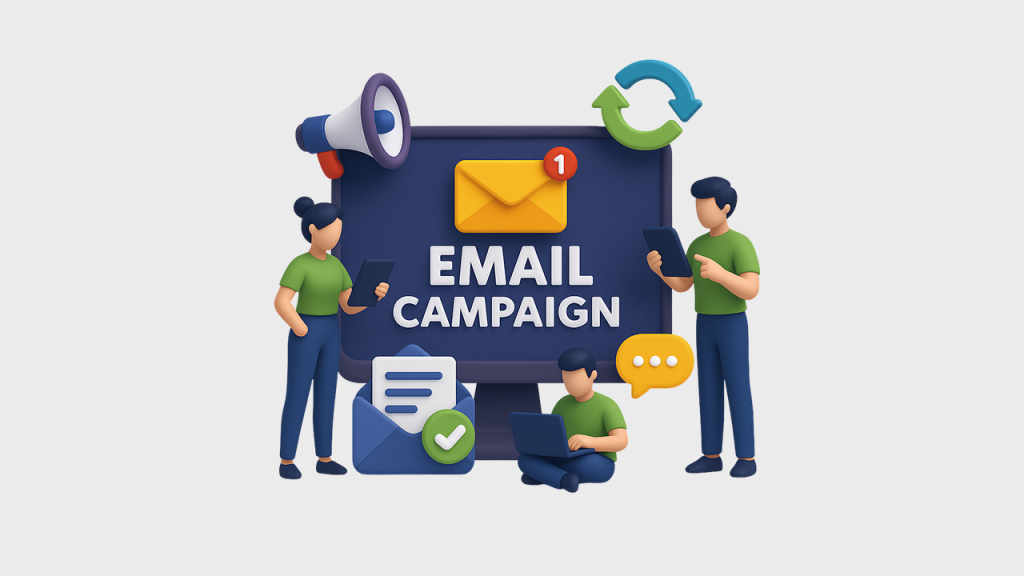If you’re on a mission to expand your customer base or enhance your outreach strategy, understanding and utilizing prospecting tools can be a game-changer.
But what exactly are these tools, and how can they transform your approach to finding and engaging potential customers? Let’s break it down.
What Are Prospecting Tools?
Prospecting tools are specialized software applications designed to help businesses discover and connect with potential customers more efficiently. These tools are pivotal in streamlining the lead generation process, enabling you to identify prospects, reach out to them, and nurture them into loyal customers. By automating routine tasks and providing valuable insights, prospecting tools can significantly enhance your efficiency and effectiveness in sales and marketing.

The Importance of Prospecting Tools
Prospecting tools offer several key advantages:
- Efficiency: By automating the lead generation process, these tools save you significant amounts of time. Instead of manually searching for leads, prospecting tools can handle this task quickly and accurately.
- Data-Driven Decisions: They provide valuable insights into potential customers, allowing you to tailor your outreach efforts based on data rather than guesswork.
- Scalability: With the ability to manage and track a large number of leads simultaneously, prospecting tools make it easier to scale your sales efforts and grow your business.
Types of Prospecting Tools
Understanding the various types of prospecting tools and how they work can help you choose the right ones for your needs. Here’s a closer look:
1. Lead Generation Tools
Lead generation tools are designed to help you find potential customers by aggregating data from various sources such as social media, websites, and online directories. These tools use sophisticated algorithms to identify prospects who match your target audience based on specific criteria like industry, company size, and location.
How They Work:
- Data Collection: Lead generation tools scrape data from multiple online sources, gathering information about potential leads.
- Filtering and Segmentation: They allow you to filter leads based on specific criteria, ensuring you target the most relevant audience.
- Integration: Many lead generation tools integrate seamlessly with CRM systems, facilitating smooth data transfer and management.
2. Contact Information Finders
These tools are designed to help you find contact details such as email addresses and phone numbers for your prospects. They are especially useful when you have a list of companies or individuals but lack their direct contact information.
How They Work:
- Web Scraping: Contact information finders scan websites, social media profiles, and online directories to locate contact details.
- Verification: Many tools include features to verify that the contact information is accurate and up-to-date.
- Exporting: You can export the collected contact information into your CRM or outreach tools for further use.
Recommended Tool: If you’re looking for a reliable email validation tool, consider Gamalogic. It offers comprehensive email validation services, including syntax checking, domain verification, and real-time mailbox validation. Its robust features and user-friendly interface make it an excellent choice for ensuring your email lists remain clean and effective.
3. Customer Relationship Management (CRM) Tools
CRM tools are essential not only for managing customer relationships but also for effective prospecting. They help you track interactions with prospects, manage follow-ups, and analyze your sales pipeline.
How They Work:
- Data Organization: CRMs centralize all your prospect information, making it easy to access and update.
- Automated Follow-Ups: They can automate follow-up emails or reminders, ensuring that no lead is overlooked.
- Analytics and Reporting: CRMs provide insights into your sales process, helping you understand what strategies are effective and what needs adjustment.
4. Email Outreach Tools
Email outreach tools are designed to manage and automate your email campaigns, increasing open and response rates through personalization and optimization.
How They Work:
- Template Creation: You can create and store email templates for different stages of your outreach campaigns.
- Personalization: These tools allow for personalization at scale, automatically inserting recipient details like names and company information.
- Tracking and Analytics: They track metrics such as open rates, click-through rates, and responses, providing insights into the effectiveness of your email campaigns.
5. Social Selling Tools
Social selling tools help you leverage social media platforms to identify and engage with potential prospects. They are particularly useful for B2B sales where platforms like LinkedIn and Twitter are critical for outreach.
How They Work:
- Profile Analysis: These tools analyze social media profiles to identify potential leads based on job titles, interests, and activities.
- Engagement Tracking: They track how prospects interact with your content, enabling you to engage with them effectively.
- Automated Messaging: Some tools can automate initial outreach messages, saving time while still allowing for personalized communication.
6. Email Validation Tools
Email validation tools ensure that the email addresses in your database are accurate, valid, and deliverable. This step is crucial in maintaining a clean and effective email list, preventing bounce-backs, and improving your email deliverability rates.
How They Work:
- Syntax Checking: Email validation tools check for proper email format and syntax to ensure addresses are correctly formatted.
- Domain Verification: They verify that the email domain exists and is capable of receiving emails.
- Mailbox Validation: The tools check whether the email mailbox is active and not blacklisted.
Choosing the Right Prospecting Tool
Selecting the right prospecting tool depends on several factors:
- Your Goals: Clearly define what you aim to achieve with the tool. Are you focused on lead generation, contact finding, email outreach, or social selling?
- Budget: Prospecting tools vary in cost, from free options to premium solutions. Choose a tool that fits your budget while providing the features you need.
- Integration: Ensure the tool integrates well with your existing CRM or other sales tools to streamline your workflow.
- Ease of Use: Opt for a tool that is user-friendly and easy to learn, minimizing the time required for training and onboarding.
Why Gamalogic Stands Out
Among the myriad of prospecting tools available, Gamalogic emerges as a standout choice, especially when it comes to email validation. Its robust suite of features—including syntax checking, domain verification, and real-time mailbox validation—ensures that your email lists remain accurate and effective. This real-time capability is crucial for maintaining high deliverability rates and minimizing bounce-backs. For businesses aiming to refine their email outreach and boost their sales strategy, Gamalogic offers unparalleled reliability and efficiency, making it one of the top tools in the prospecting toolkit.
You might also like

What Is a Cold Email and Why Is Everyone Talking About It?
Learn what a cold email really is, why it remains one of the most powerful tools for outreach, and how to use it effectively to connect, engage, and grow your business.

Detecting Role Accounts, Disposable, and Catch-all Addresses in Prospect Lists
Identify role-based, disposable, and catch-all email addresses to protect your sender reputation and improve sales email performance.

Email Finding Explained: How to Connect with Key Contacts Online
This blog breaks down modern email finding—showing you how to efficiently connect with the right contacts online using ethical, accurate, and time-saving methods. Learn the tools, techniques, and best practices to grow your network without compromising trust.






 No credit card required
No credit card required


Post your Comment.